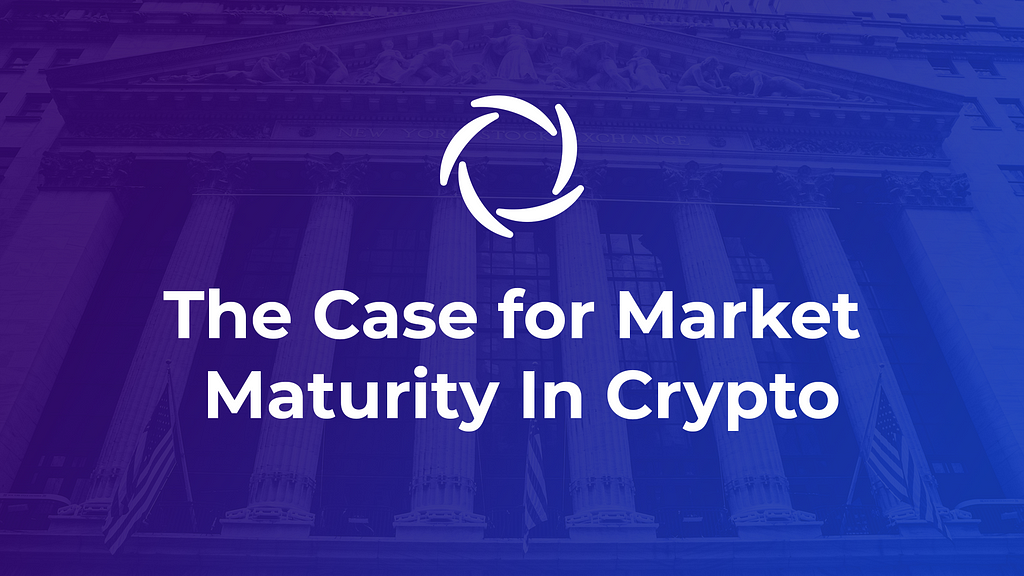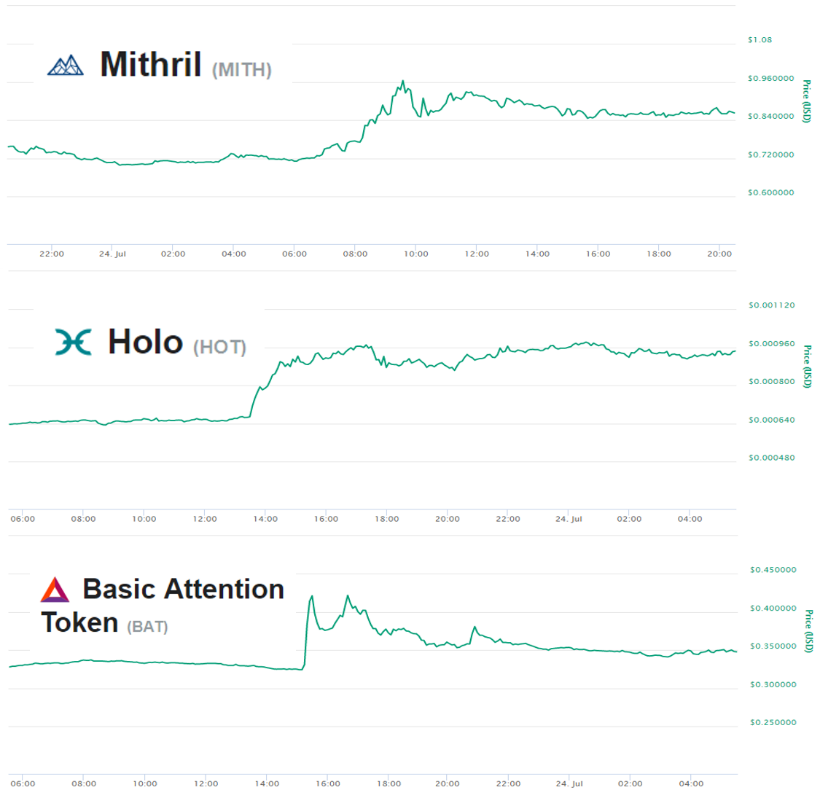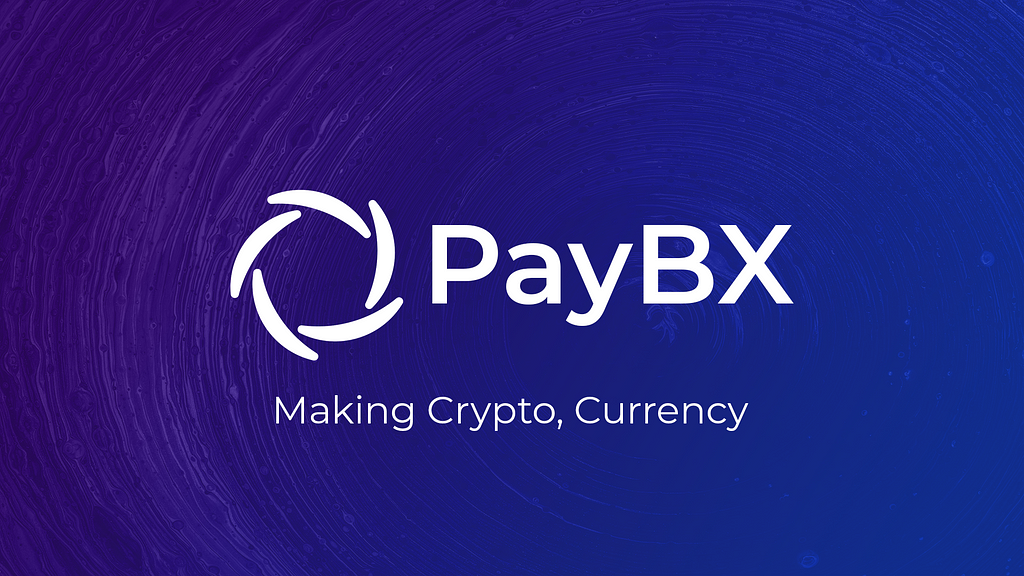Latest news about Bitcoin and all cryptocurrencies. Your daily crypto news habit.

In their seminal research whitepaper that introduced cryptocurrencies as a new asset class to the world, Adam White (Bakkt) and Chris Burniske (Placeholder VC) described bitcoin as possibly the “biggest technological development since the Internet”. As a unique asset class, cryptocurrencies stand out from other traditional assets in terms of investability, politico-economic characteristics, correlation of returns and risk-reward profile. However, in terms of maturity of the market and participants there’s still some progress to be made. Institutional and retail adoption happens in any industry that is transparent, just and liquid. Markets showing high speculative behavior, regulatory uncertainty and no real world applications find few takers because they are prone to manipulations and scams.
Current Landscape
In its current state, the crypto market is fairly influenced by sentiment. Partnership announcements or exchange listings cause major price fluctuations. While speculation is not as bad as it is made out to be, market movement on stronger fundamentals is ideal. Joel Monégro of Placeholder notes that speculation drives a lot of the initial growth phase and is “often the engine of technological adoption”. Additionally, most cryptocurrency trading activity is linked to BTC price movements, irrespective of how individual projects have been performing. In a mature market, any coin/token’s price should be largely determined by its own merit and be decoupled from an unrelated asset.
 Speculative behavior is all too familiar in crypto (sources: 1, 2)
Speculative behavior is all too familiar in crypto (sources: 1, 2)
Wash trading and pump and dump scams are still commonplace. While industry initiatives like Blockchain Transparency Institute’s Market Surveillance Report help monitor malpractices, better regulatory oversight and clearer rules of prosecution are needed to build confidence and trust. Moreover, absence of standard business practices in crypto means that companies resort to unprofessional behavior in cases where they have market power. Cases where exchanges demand millions for listing a project have made the news several times. However, unicorns like Coinbase and Binance are setting fair practice examples for others to follow.
Market participants also need a sense of security for mass adoption to become a reality. A timeline of exchange hacks reveals that most major exchanges have been affected by these attacks. On this end, platforms have been building more robust security measures (moving funds to cold/multi-sig wallets) and raising awareness about crypto best practices (Coinbase Earn). Lack of insurance of crypto assets against thefts has also been a longstanding concern which is being addressed now. Companies like Coinbase and Curv have already insured large chunks of customer funds held in their custody. But as of now there is more demand than supply for crypto insurance.
For a market to be called mature, projects must capture real users with meaningful use-cases. These use cases could be store-of-value, means of exchange or more specific applications like blockchain identity, asset tokenization, supply chain management, fintech solutions etc. While there continue to be many dubious projects swarming the market, legitimate platforms with real world utility already far outnumber the questionable ones. Some of the applications are even leading to collaborations with government bodies. In early 2018, Zebi announced a partnership with the government of Andhra Pradesh in India for securing land records. Vite Labs has been chosen to build a no-interest loan platform for low-income citizens of Syracuse, USA. And Binance has partnered with the government of Argentina to fund and promote blockchain projects.
 FinTech solutions like aXpire’s PayBX application make online crypto transactions a breeze
FinTech solutions like aXpire’s PayBX application make online crypto transactions a breeze
Positive Signs
Signs that the market is maturing are starting to show. Researchers from the Institute of Nuclear Physics at the Polish Academy of Sciences studied the minute-by-minute BTC price data from 2012 and published its findings in a recent report. The report states that the BTC market now shows features similar to other established financial markets like forex and could be a serious competition to them. There is clear indication that BTC and other cryptos are on their way to become regular markets in the near future. Prof. Stanisław Drożdż observes that while the forex market needed the support of central banks and governments to mature, the Bitcoin market maturation has been “on its own, solely due to its own characteristics”.
Tech behemoths and institutional funds getting into crypto is another sign of impending maturity. Facebook announced its Libra cryptocurrency recently in association with big names like Mastercard, VISA, Uber, PayPal, eBay, Stripe, Vodafone etc. US based Intercontinental Exchange (ICE) has been seeking approval for Bakkt, a bitcoin futures market, for almost a year now. Mergers and Acquisitions (M&A) numbers have been growing steadily which signals industry consolidation and stability. Meaningful adoption news like Samsung supporting blockchain products in its latest Galaxy S10 phone and Swiss luxury retailers accepting BTC payments are also evidence to increasing maturity. Vaporware projects and proof-of-concepts are starting to give way for live deployed products that have real benefits.
Precursor to Growth Phase
We must remember that crypto is still in the early phase of its lifecycle. Ari Paul of BlockTower Capital says that the current period is similar to 1994 when internet penetration was <1% but it was technologically capable of becoming a widespread application. Today, the bitcoin network is able to securely make global transactions while being resistant to censorship. What began as a small group of cryptographers experimenting with code is now a 45 million people HODLer and user network.
To move from the 1% to masses, the first steps needed are to make the technology safe, useful and accessible. We are moving past this stage since consolidation events indicate that robustness and utility of the technology is being established. With major jurisdictions starting to set up clear regulations for crypto, we can safely say that the ecosystem is maturing quickly to make way for the final growth and mass adoption phase. Coinbase is already the most downloaded iPhone app in the US and has more users than brokerage giant Charles Schwab. So when Binance’s CZ says that there will be more crypto users than internet users in a few years, there is reason to believe that we are well on our way to get there.
About the Authors:
Rohit Chatterjee is an Analog Design Engineer working at Texas Instruments. Abhijoy Sarkar is a banker-turned-entrepreneur. They are high school friends who lost contact years ago. They reunited over crypto in early 2018 and have been investing through mutual research and shared knowledge. Rohit and Abhijoy wrote this article for aXpire as freelancers at MatchBX.io
The Case for Market Maturity in Crypto was originally published in HackerNoon.com on Medium, where people are continuing the conversation by highlighting and responding to this story.
Disclaimer
The views and opinions expressed in this article are solely those of the authors and do not reflect the views of Bitcoin Insider. Every investment and trading move involves risk - this is especially true for cryptocurrencies given their volatility. We strongly advise our readers to conduct their own research when making a decision.